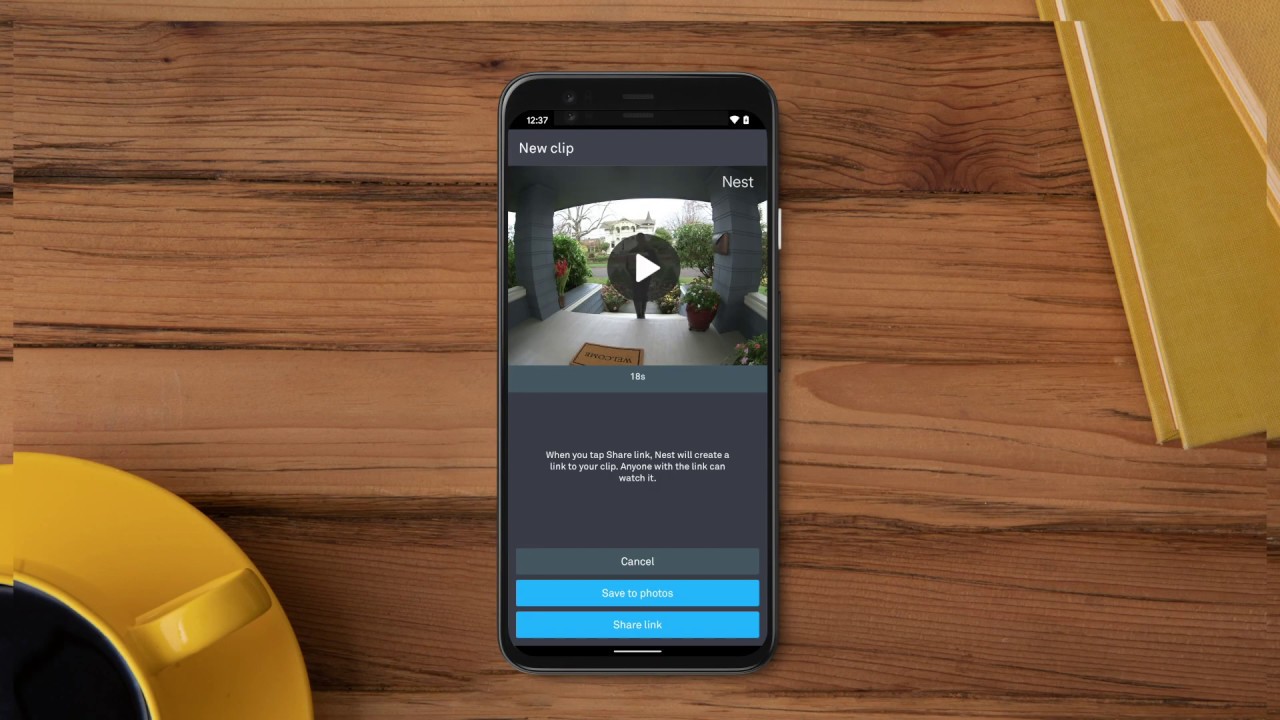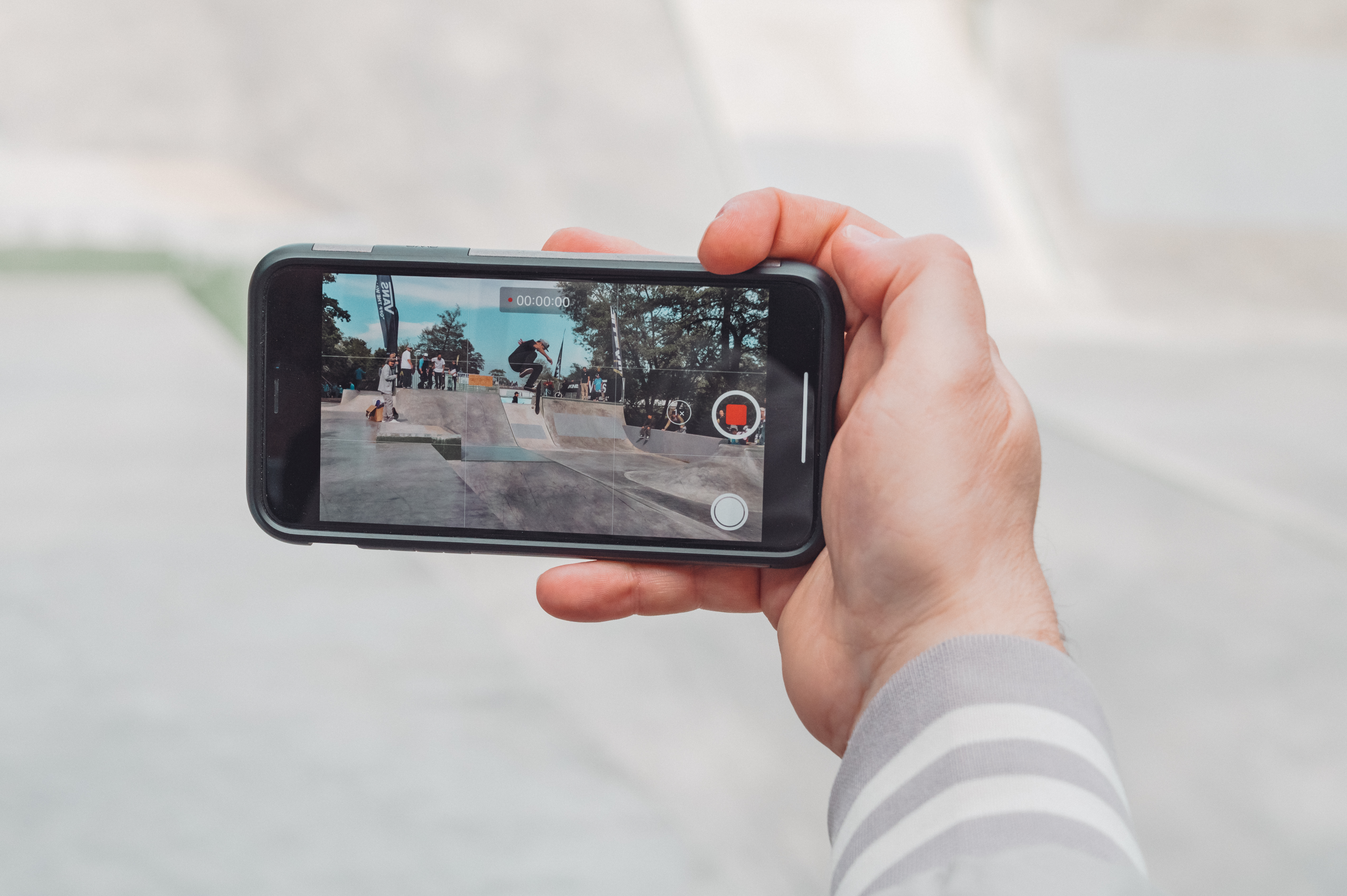Video is a popular form of media that allows us to capture and relive special moments in our lives. Whether it’s a family vacation, a birthday party, or a graduation ceremony, videos hold memories that we want to cherish and share with others. With the advancement of technology, we now have the ability to not only save videos, but also to save them as new clips with added effects and filters.
When it comes to saving videos, there are two main options: saving them to the Photos image & video library or saving them as files to external storage services. Let’s explore these options in more detail.
Saving videos to the Photos image & video library is a convenient way to keep your videos organized and easily accessible. When you save a video to your library, it is stored in your device’s local storage. This means that the video is readily available for viewing and editing within the Photos app. To save a video to your library, open the video in the Clips app and tap on the desired clip. Then, tap on “Save Clip” and the clip will be saved to a Clips album in your library. It’s important to note that when you save a clip to your library, it is saved without any added effects or graphics.
On the other hand, saving videos as files to external storage services provides you with more flexibility in terms of storage and sharing options. By saving a video as a file, you can choose to store it in services like iCloud Drive, Dropbox, OneDrive, or even local storage. This allows you to free up space on your device while still having access to your videos whenever and wherever you need them. To save a video as a file, you can use the “Save to files” option in the Clips app. This will prompt you to choose a destination for your video file, whether it’s a specific folder in an external storage service or your device’s local storage.
It’s worth noting that saving videos as files may require an internet connection, especially if you’re using cloud storage services. Additionally, depending on the size and quality of the video, it may take some time to upload and save the video to the chosen destination. However, once saved, you can easily share the video with others by providing them with a link or by granting them access to the file.
Saving videos is a crucial step in preserving our cherished memories. Whether you choose to save videos to the Photos image & video library or as files to external storage services, it’s important to consider your storage and sharing needs. Both options offer their own advantages, so choose the one that best suits your preferences and requirements. So go ahead and start saving those precious videos, ensuring that you can relive and share those special moments for years to come.

What Does Save As New Clip Mean?
“Save as new clip” refers to a feature or action that allows you to save a video as a separate and distinct file, while preserving the original video file. When you save a video as a new clip, any changes or edits made to the video are saved in the newly created file, while the original video remains unchanged.
This functionality is useful in various situations. For instance, if you want to make edits or alterations to a video without affecting the original version, you can save it as a new clip. This allows you to experiment with different edits, apply special effects, or create different versions of the same video without the risk of losing or altering the original content.
By saving as a new clip, you can also create different versions of a video for different purposes or platforms. For example, you may want to create a shorter version of a video for social media platforms, while keeping the longer version for other uses. Saving as a new clip enables you to have multiple versions of a video, each tailored to specific requirements.
When you save a video as a new clip, it is important to note that the changes you make are saved separately from the original file. This means that any modifications or edits applied to the new clip will not affect the original video. This ensures that the original content is preserved and can be accessed or used in its original form whenever needed.
“save as new clip” is a feature that allows you to create a separate and distinct video file while retaining the original video. It is a useful functionality for making edits, applying effects, creating different versions, or experimenting with changes without altering the original video file. This feature ensures that the original content is preserved and can be accessed separately if required.
What is The Difference Between Saving a Video And Saving to Files On iPhone?
The difference between saving a video and saving to files on an iPhone lies in the location where the video is stored.
1. Saving a video: When you save a video to the Photos image & video library on your iPhone, it means that the video is stored within the device’s local storage. This library is a built-in feature of the Photos app, where all your photos and videos are stored. The video becomes accessible through the Photos app and is synced with any connected devices through iCloud, if enabled. In this case, the video is considered part of your media collection and can be easily viewed, shared, or edited using various apps.
2. Saving to files: On the other hand, saving a video to files on your iPhone means that the video is stored as a separate file within the device’s storage, such as iCloud Drive, Dropbox, OneDrive, or any other storage service you have installed. This option allows you to save the video to a specific folder or location of your choice, separate from the Photos library. By saving to files, the video is treated as a standalone file that can be accessed and managed through the Files app on your iPhone. You can organize the video alongside other files and folders, and it can be easily shared or moved to different storage locations.
Saving a video to the Photos image & video library means storing it within the device’s local storage, accessible through the Photos app. Saving to files, however, allows you to store the video as a separate file in a specific location of your choice, accessible through the Files app.
How Do You Save a Clip Of Video On iPhone?
To save a clip of video on an iPhone using the Clips app, follow these steps:
1. Open the Clips app on your iPhone.
2. Locate the video that you want to save a clip from and tap on it to open it.
3. Once the video is open, you will see a timeline at the bottom of the screen.
4. Use your finger to scroll through the timeline and find the specific clip that you want to save.
5. Once you have found the desired clip, tap on it to select it.
6. After selecting the clip, you will see a toolbar at the bottom of the screen with various options.
7. Tap on the “Save Clip” button, which looks like a downward arrow pointing to a horizontal line.
8. The clip will now be saved to your iPhone’s library.
9. To access the saved clip, go to your iPhone’s Photos app.
10. In the Photos app, navigate to the “Albums” tab and look for the “Clips” album.
11. Open the “Clips” album, and you will find the saved clip there.
12. It’s important to note that when you save a clip to your library, it will be saved without any filters or graphics that you may have added in the Clips app.
13. If you want to save a clip with the added effects, you can use the “Save Video” option in the Clips app instead.
That’s it! You have successfully saved a clip of video on your iPhone using the Clips app.
How Do You Save a Clip?
To save a clip in the Google Clips app, follow these steps:
1. Open the Google Clips app on your device.
2. Navigate to the clip that you want to save.
3. Swipe right on the clip. This action will bring up a menu with different options.
4. Select the option to save the clip. You will have the option to save it to either Google Photos or your phone’s gallery.
5. Choose the desired destination for the saved clip. If you choose Google Photos, the clip will be saved to your Google Photos library. If you choose your phone’s gallery, the clip will be saved directly to your device’s gallery.
6. Wait for the clip to finish saving. The time it takes to save the clip will depend on the length and quality of the clip, as well as your internet connection speed.
7. Once the clip is saved, you can access it anytime in the selected destination (either Google Photos or your phone’s gallery).
It’s important to note that when you save a clip, it will be removed from your camera and the Google Clips app, freeing up space for new clips. If you want to keep a copy of the clip in both the app and the saved location, you will need to manually make a copy of the clip after saving it.
Remember, you can also save or delete multiple clips at once by tapping the blue button in the bottom right corner of the home screen. This allows for easier management of your clips and helps you save or delete them in bulk.
Conclusion
Videos are a valuable and versatile form of media that can be stored and accessed in various ways. When using the Clips app, you have the option to save a copy of a video clip to your library, preserving the original file while also saving any changes made to the clip. This saved clip is stored in a Clips album within your library, separate from the original video.
Additionally, if you are using the Google Clips app, you have the option to save or delete clips directly from the app. Swiping right on a clip saves it to Google Photos or your phone’s gallery, allowing for easy access and organization. On the other hand, swiping left permanently deletes the clip from both the camera and the Google Clips app.
It is important to note that when saving clips to your library or Google Photos, they are saved without any filters or graphics that may have been added. If you want to save a clip with effects, you will need to follow a different process.
Understanding how to save and manage videos is crucial for organizing and preserving your media collection. Whether you choose to save clips to your library or to an external storage service, having access to your videos in a convenient and secure manner allows you to enjoy and share your content effectively.








